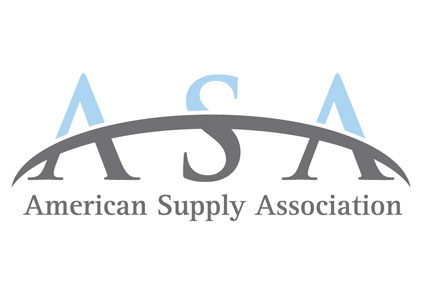ASA Legislative Update
A New Year, A New Congress — Unfinished Business
For now, LIFO repeal and S corporations have been spared a direct assault.


|
The House and Senate recently returned to clean up the mess that was left behind in 2012. In large part, this unfinished business is a result of partisan differences, campaigning for re-election and a general lack of urgency. While Congress continues its ways, one major factor in governing cannot be overlooked; the president has no more elections to run and enjoys support to pursue his agenda without fear of the ballot box.
For more than a year, we have been talking about the “fiscal cliff,” where tax rates would rise for all Americans and billions of dollars were scheduled to be pulled from the economy. Passing the December 31 deadline, both sides dug in their heels, wanting either more in tax revenue or more in spending reductions. The final agreement resulted in freezing tax rates for those making under $400,000 ($450,000 for households). Taxes on capital gains and dividends also are set to rise on the same households, up to 20% (23.8% with the Affordable Care Act increases).
For now, LIFO repeal and S corporations have been spared a direct assault. It is widely reported, however, that the fiscal cliff deal was a down payment on deficit reduction with more to come in 2013.
Toward the end of 2012, a number of CEOs from the country’s largest multinationals came out in favor of Congress and the administration coming together on a deal. Many viewed this as advocating for tax increases in hopes of achieving corporate tax reform in 2013 at the expense of individual tax reform. This is what small business needs more of. Throughout 2013, ASA will work closely with a number of business groups to advocate for a common sense tax policy that doesn’t harm small businesses.
Here is where it gets interesting. During 2012 fiscal cliff negotiations with the president, House Speaker John Boehner offered nearly $1 trillion in tax revenue by cleaning up the tax code and removing a number of exemptions and deductions. With a number of these provisions remaining untouched, it is believed the White House may use this as a potential starting point for Round 2 of negotiations. ASA once again will fight any effort to repeal LIFO and remove provisions favorable to small businesses, especially S corporations. However, now that tax rates are permanent, a degree of certainty should comfort many business owners. For better or worse, tax reform is expected in 2013.
Regulatory Forecast
With the departure of EPA Administrator Lisa Jackson and Labor Secretary Hilda Solis, the president will need mighty big feet to fill those shoes. Most would agree Jackson’s legacy will be her firm grip on industry and her pursuit of a strong, pro-environmental agenda on the president’s behalf and at industry’s expense; while the NLRB has allowed its allies in labor to flourish the past four years. Some of the EPA’s agenda items include: restricting natural gas development through the use of hydraulic fracturing (fracking), the controversial Boiler MACT rule and its aggressive interpretation of the Clean Air Act. What is ironic is some in Washington have said the EPA was so aggressive in its first term, it may have to spend its second term cleaning up a number of regulations still under review or challenge.
Among some of the regulatory and legislative issues ASA will be pursuing are the implementation of the Lead in Plumbing Act and the Metal Theft Prevention Act of 2013. As most know by January 2014, manufacturers and distributors will have to comply with changes in law that require no more than 0.25% maximum lead content – measured through a weighted average calculation – mandated on all pipes, fixtures and fittings sold in U.S. for installations delivering water for human consumption. Throughout the year, ASA will be working closely with other industry leaders to ensure members are educated on this law and how they should prepare to comply. In addition, we’ll be working with Congress and the EPA on ensuring a reasonable implementation.
Also this year, ASA will be leading the way to see that legislation cracking down on metal theft is signed into law. With the bipartisan introduction of the Metal Theft Prevention Act of 2013 which ASA helped draft with senators Amy Klobuchar (D-Minn.) and Lindsey Graham (R-S.C.), we will aggressively pursue support in the House and Senate for this commonsense legislation.
The President’s Second Term Agenda and its Political Prospects
We began by mentioning that second-term presidents enjoy the luxury of not having to ask for their job back. In addition, they have a bit of political capital to spend. But that political capital has its limits, especially when taking into account the 2014 elections. Historically, the party of the president tends to lose seats in the following election and the odds are favorable (once again) that they will in the Senate. The reason for that is the large number of senators that came to power on the president’s coattails in 2008 and are now up for re-election in 2014.
In 2014, there will be 21 Democrats up for re-election, in “red” states such as Louisiana, Arkansas, Alaska and North Carolina and already they are measuring their comfort level of aligning with the president on issues such as immigration reform, climate change and gun control. It remains to be seen how much political capital the president is prepared to use on these issues and risk a number of senate seats in red states. While 21 Democrats are up in 2014 as opposed to only 14 Republicans, that page flips in 2016 when 24 Republicans and 10 Democrats are up for re-election.
In future issues, we will address the Affordable Care Act, one of the president’s biggest legacies. Some of its most important provisions will come more into focus in the coming year.
For more information on ASA’s efforts in Washington, D.C., visit the Advocacy section of www.asa.net or contact Dan Hilton at dhilton@asa.net or 703/328-5234.
Helpful Links
- American Supply Association (ASA)
- More ASA News
- Follow Supply House Times on Twitter!
- Like Supply House Times on Facebook!
- Related article: Letter from the ASA President
Looking for a reprint of this article?
From high-res PDFs to custom plaques, order your copy today!








